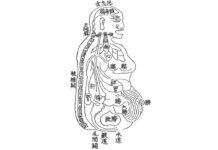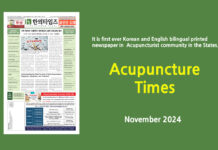
In Elders, Severe Back Pain After Falls, Consider it As Red Flag Situation.
By Winston Lee L. Ac, Ph.D., KMD
As an acupuncturist, I sometimes see a compression fracture in patients. This is when the vertebrae in the spine sit still like a building collapsing, causing intense pain that lasts for a couple of months. It is less common in younger people but can be caused by strong external impacts such as car accidents, skydiving, and snowboarding. It’s usually more likely to happen to seniors over 60, especially if they have osteoporosis or osteopenia. Most of the time, it’s caused by a strong impact on the tailbone of the hip from a fall, but in some cases, it can also be caused by a sudden onset of pain when they are just at rest.
However, this is quite different from other fractures. First, since you’re not breaking a long bone, it’s extremely rare to bleed internally or externally. Though it’s a fracture, you cannot put a cast on it to immobilize it. So, the first order from the doctor when this happens is a full bed rest at home. The most common treatment is pain medication or pain injections to reduce the pain.
As a practitioner, the first thing to do is to figure out the compression fracture with some exam. Symptoms of acute back pain alone are not enough to distinguish compression fracture from a minor back sprain or a herniated disk. If the patient is older and has been falling heavily on their buttocks due to a slippery floor, this should be a red flag. It would be best if you referred the patient for an X-ray to make an accurate diagnosis. To refer a patient, note ‘L-spine AP and lateral view’ on the referral paper for your information.
It is necessary to explain to the patient that once the compression fracture has been identified through this process, there is nothing that can be done in conventional medicine except to give pain medication or pain injections. You should also explain to the patient that acupuncture can be just as effective as painkillers and injections. The frequency of acupuncture should be two or three times a week in the beginning, and after three to four weeks, if the pain is reduced by more than 30%, the frequency can be reduced to once or twice a week. Plus, prescribing herbal medicines, including Dan Shen, Dang Gui, and Gui Zhi, to reduce inflammation is necessary. Because the pain from compression fracture is not bearable, acupuncture and herbal medicine reduce the inflammation and control the pain effectively. The best of using acupuncture and herbal medicine is that they are not harmful to the liver and kidney despite patients taking it for a long time.
One of the most important things in treating these patients is to describe their symptoms in detail. Provide a clear diagnosis based on X-rays, and let them know that it’s not just a sprain and that they can expect a total treatment period of at least 8 weeks and possibly up to 16 weeks. And fully explain why acupuncture and herbal treatments are more effective and safer fundamentally for the body than painkillers or pain injections.
Despite the intensive care described above, the first four weeks are generally characterized by extreme pain that can interfere with daily life. Even if the patient’s symptoms have improved and the pain has completely disappeared, it is important to emphasize that patients should be especially careful about falling or doing anything that puts pressure on the spine for at least a year because the vertebrae are still fragile.































